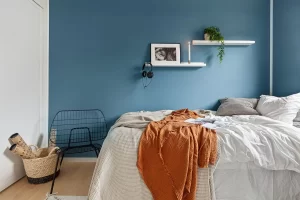The Power of Lighting Illuminating Your Home in Style

Lighting is one of the most important elements to consider when decorating your home. It can add functionality and style, while also setting the mood. Using the right bulbs and fixtures can make or break a space.
Learn about the different types of lighting, what colors to use and how to layer them for maximum effect.
1. Choose the Right Light Bulbs
The wrong light bulb can dramatically alter the look and feel of a room. So when you head to the hardware store or big box retailer for replacements, there is a lot at stake.
With a little bit of learning, you can navigate the lighting aisle like a pro. It all comes down to choosing the right type of light bulbs for your space and understanding what watts, lumens, and Kelvin ratings mean.
2. Create a Lighting Plan
Creating a lighting plan is one of the most important things you can do for your home, especially if you’re moving into a new space or redecorating. Without a plan, you could end up with an unnecessarily bright room that lacks ambiance.
Your lighting plan should include both ambient and task lighting. Ambient lighting is what lights up the entire room, and task lighting is for specific purposes like working or reading.
It’s also a good idea to think about energy efficiency when creating your lighting plan. This can help you save money by using dimmer switches and installing sensors in key areas.
3. Create a Lighting Scheme
A well-designed lighting scheme can transform the way your home looks and feels. It should be considered at the “first fix” stage of construction or renovation and can easily be incorporated into your budget with the help of smart electricians.
Layered lighting adds depth and visual interest to a space. It can also be used to perform functional tasks, such as illuminating cabinets and cooking areas or creating a cosy mood.
Choosing the right light fixture can influence how your space is perceived, so it is important to consider the size of the room and its layout when selecting lighting. This will ensure that your light fixture is proportionally sized and doesn’t overwhelm the room.
4. Add Decorative Lighting
A decorative light fixture can serve a dual purpose, as a statement piece and an artistic accent to your home. Adding a lighting control system like dimmer switches to your decorative lights can also be an effective way to adjust the light levels and create different ambiances.
Unlike task and accent lighting, which are primarily functional, decorative lighting is used purely for aesthetic purposes. This includes lights like wall sconces, chandeliers and pendant lamps. These lights can add an extra layer of interest to your décor, leaving guests in awe.
5. Add Ambiance
When it comes to creating ambiance in your home, lighting is an essential element. With the right combination of ambient, task and accent lighting, your space can feel inviting and energized.
Illuminating areas like dining rooms and main living spaces, allows you to create a warm and inviting atmosphere perfect for relaxing after a long day. It also increases home value and makes your space enticing to potential buyers down the road.
Use recessed lights to highlight a source of pride, such as awards or trophies on a mantle, or install track lighting over a bookcase for a dramatic effect.
6. Add Texture
Lighting can be used to add texture to a room in the same way that furniture or other elements do. The style of lamp, the temperature of the bulb and where it is placed can all help to create a sense of texture in the space. For example, a chrome floor light will provide a completely different feeling than hammered bronze wall sconces and cool white lights will create a more contemporary feel than warm ones. By adding multiple textures and layering your lighting, you can create the perfect ambiance for any room.


